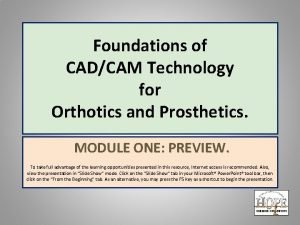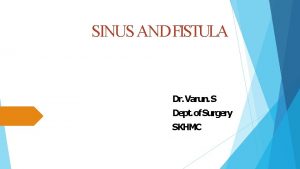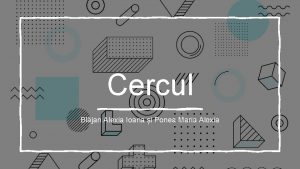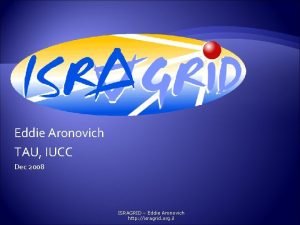Advancement of UE Prosthetics Alexia Adams Eddie Smith























- Slides: 23

Advancement of UE Prosthetics Alexia Adams & Eddie Smith

Fast Facts ~ 10, 000 new UE amputations in the US every year Most common causes of UE amputations (1) Trauma (2) Cancer (3) Vascular complications 75% of UE amputations in adults are due to trauma MVA Machinery accident

History 218 - 210 BC Marcus Sergius First documented user of a prosthetic hand Roman general who made an iron hand fashioned to hold his shield 1508 Gotz von Berlichingen Invented hands that could be manipulated through springs & straps 1510 -1590 Ambroise Pare “Father of Prosthetics” Creator of Le Petit Lorrain hand made of iron that operated by springs and catches

History 1863 Civil War Major advancements in prosthetics Rubber hand was invented 1915 Germany First power-generated hand 1922 D. W. Dorrance Inventor of the Split Hook Hand 1943 Reinhold Reiter Inventor of the first myoelectric hand

So where are we today…?

UE Prosthetic Options 1. Passive or Cosmetic Prosthesis 2. Conventional or Body-Powered Prosthesis 3. Electrically Powered and Myoelectric Prosthesis 4. Hybrid Prosthesis 5. Adaptive or Recreational Prosthesis 6. No Prosthesis

Passive or Cosmetic Prosthesis Users do not require precise hand control such as grasp, but is often used more for aesthetic appeal.

Passive or Cosmetic Prosthesis Cost: ~$5, 000 Advantages Appearance Lightweight Simple and easy to use Durable and easy to maintain Provides limited function such as opposition and dexterity Disadvantages

Conventional or Body-Powered Prosthesis This prosthesis is often suspended from a harness fastened around the person's shoulder or upper torso. Movements utilize a cable connected to the harness at one end, and to a mechanical hand, hook or elbow at the other end for a wide range of basic function and control.

Conventional or Body Powered Prosthesis Cost: ~$10, 000 Advantages Lightweight Less expensive Durable and easy to maintain Disadvantages Appearance Limited grip force Harness can be uncomfortable and restrictive Possible overuse injuries

Electrically Powered and Myoelectric Prosthesis Utilizes motors to open and close the hand, and can also flex and extend the elbow or rotate the wrist. User controls the prosthesis by contracting the muscles in the residual limb, generating EMG signals that activate the motor in the elbow, wrist or hand. Could allow for greater range of motion, a more natural appearance, and enhanced work ability.

Electrically Powered and Myoelectric Prosthesis Cost: $20, 000 - $100, 000 Advantages Appearance Dexterity and function Increased comfort and ROM More energy efficient Disadvantages Cost Weight Battery maintenance Difficult to maintain Susceptible to harmful elements such as moisture and dust Requires intensive training for successful outcome

Hybrid Prosthesis A hybrid (combination of elements of conventional and electrically powered prostheses) prosthesis provides the user with the unique ability to operate the elbow and the hand at the same time. Used for transhumeral (above-elbow) amputees The elbow joint is controlled via a harness system The terminal device is controlled via an external power source

Hybrid Prosthesis Advantages Lighter weight than myoelectric prosthesis Less harnessing than body-powered prosthesis Greater grip force than body-powered prosthesis Reduced initial and maintenance costs Disadvantages Control harness usually required Increased weight on harness

Adaptive or Recreational Prosthesis The activity-specific prosthesis is meant for the individual whose specialized requirements cannot be met by the other options. For example, custom adaptations can be fabricated for photography, swimming, basketball, baseball, hockey, golf, fishing, pool and most other recreational activities.

Adaptive or Recreational Prosthesis Advantages Increased user function Ability to resume previous work, hobbies, recreational activities Disadvantages Not covered by insurance

No Prosthesis Only 50% of UE amputees elect to be fitted with a prosthesis Of that 50%, half abandon their prosthesis within a year

No Prosthesis Cost: $0 Advantages No cost, maintenance Easier to perform tasks with sound limb Disadvantages Psychosocial issues Unable to perform bimanual tasks

So which prosthesis is best for your patient? There is not a “right” or a “wrong” option. There are simply “better” and “worse” choices for each individual patient based on their specific needs. The goal is to find a prosthetic option that will help your patient do what they want to do and live the life they want to live. Sometimes not using a prosthesis is the best choice. In the end, the patient needs to choose which option is best for them because they will be the one wearing it. It does them no good if it sits in the closet collecting dust. Keys to success: listen, educate, advocate, and find a good prosthetist who will do the same.

The Future of UE Prosthetics 3 D Printed Prosthetics Enablingthefuture. org Group who has created open source designs for mechanical hand assistive devices that can be downloaded and 3 D printed for less than $50 in materials. Targeted Muscle Reinnervation (TMR) Surgical procedure that reassigns nerves that once controlled the arm and the hand. Think about action they want to perform. Osseointegration

The Future of UE Prosthetics, cont.

References 1. Enabling The Future. 2016. Available at: http: //enablingthefuture. org/. Accessed July 18, 2016. 2. Hand Prosthetics - History. Brown University. 2003. Available at: http: //biomed. brown. edu/Courses/BI 108_2003_Groups/Hand_Prosthetics/history. html. Accessed July 12, 2016. 3. Historical Aspects of Powered Limb Prostheses. Digital Resource Foundation for the Orthotics and Prosthesis Community Available at http: //www. oandplibrary. org/cpo/1985_01_002. asp. Accessed July 11, 2016. 4. How Much Does a Prosthetic Arm Cost? . Cost Helper Health. 2016. Available at: http: //health. costhelper. com/prosthetic-arms. html. Accessed July 14, 2016. 5. Jonsson S, Caine-Winterberger K, Branemark R. Osseointegration amputation prostheses on the upper limbs: methods, prosthetics and rehabilitation. Prosthetics and Orthotics International. 2011; 35(2): 190 -200. doi: 10. 1177/0309364611409003. 6. Perry E. Targeted Muscle Reinnervation | Johns Hopkins Hospital in Baltimore, MD. Hopkinsmedicineorg. 2016. Available at: http: //www. hopkinsmedicine. org/surgery/about/innovations/tmr. html. Accessed July 18, 2016. 7. Prosthetic History: The Body-Powered Arm and William Selpho. The Open Prosthetics Project. 2010. Available at: http: //openprosthetics. ning. com/profiles/blogs/prosthetic-history-the. Accessed July 12, 2016. 8. Prosthetic Options - Hanger Clinic. Hangerclinic. 2016. Available at: http: //www. hangerclinic. com/limb-loss/adult-upperextremity/Pages/Prosthetic-Options. aspx. Accessed July 13, 2016. . 1985.

Questions? ? ?
 Alexia adams basketball
Alexia adams basketball Eddie adams arc flash
Eddie adams arc flash Eddie adams saigon execution
Eddie adams saigon execution Photojournalism code of ethics
Photojournalism code of ethics Cad cam prosthetics
Cad cam prosthetics Prosthetics and orthotics
Prosthetics and orthotics Adams and adams secretarial training
Adams and adams secretarial training Ejp alexia
Ejp alexia Que animal é esse
Que animal é esse Aj my weird school
Aj my weird school Alexia lauaxeta
Alexia lauaxeta Alexia caoudal
Alexia caoudal Alexia liceo sorolla
Alexia liceo sorolla Alexia elefante
Alexia elefante Classification of vowels
Classification of vowels Insall salvati ratio
Insall salvati ratio Association for the advancement of medical instrumentation
Association for the advancement of medical instrumentation Practice advancement initiative
Practice advancement initiative Holistic advancement meaning
Holistic advancement meaning Professional advancement in nursing
Professional advancement in nursing Stages of tb lymphadenitis
Stages of tb lymphadenitis Advancement office structure
Advancement office structure Center for additive technology advancement
Center for additive technology advancement National technology transfer
National technology transfer












































